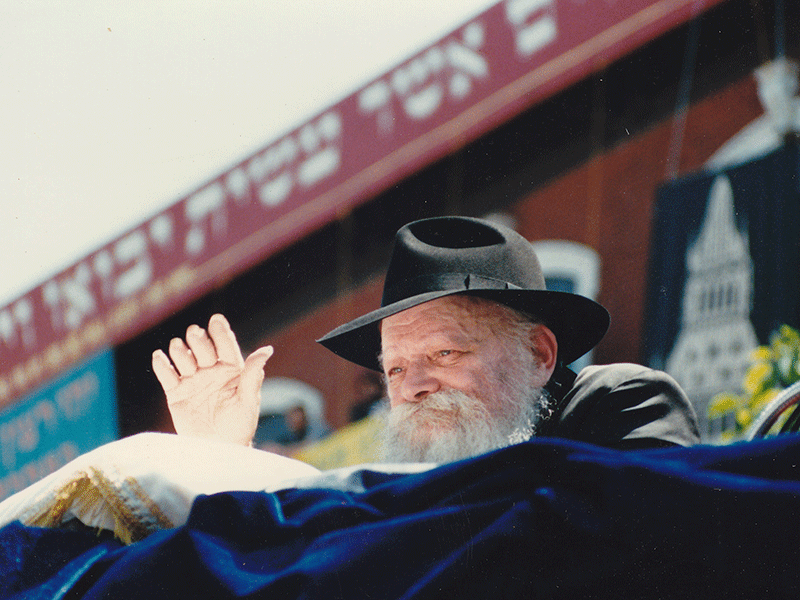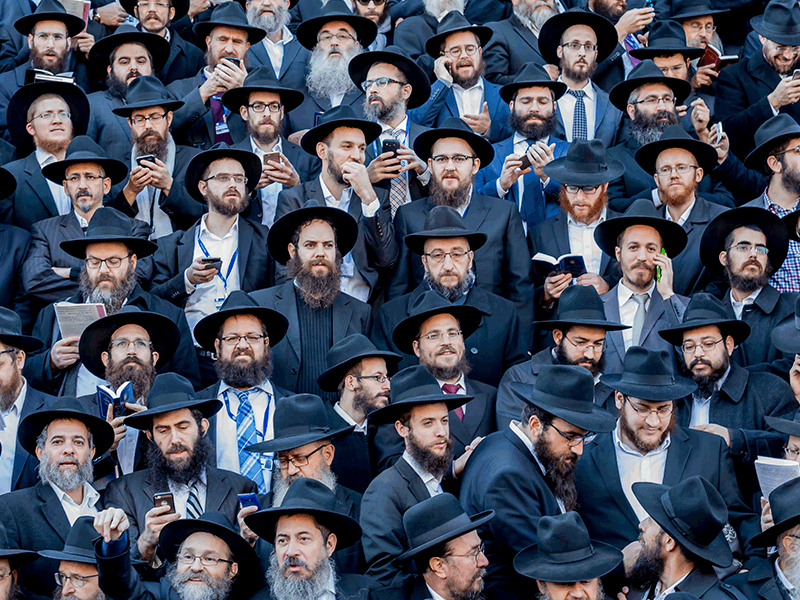It’s quite possible that by the time you finish reading this article, another Chabad House or synagogue will have opened somewhere.
Chabad-Lubavitch is mammoth and shows no signs of waning. As the 2015 book, The Secret of Chabad: Inside the World’s Most Successful Jewish Movement, noted: “A small Chassidic group, hammered by the Holocaust and the harsh hand of communism in Russia, would become the largest Jewish organization in the world.”
While Judaism’s mainline branches wrestle with ways to retain adherents and other Hasidic groups remain content to keep low profiles – in some cases, shunning the outside world – Chabad continues to grow exponentially, openly embracing any and every Jew.
From Laos to New Caledonia, from the Congo to Paraguay, it has a presence. Last October, Uganda became the 100th country to get a Chabad emissary. And in February, Chabad made news when it established an outpost in Iceland.
Famously, Chabad of Katmandu hosts what’s been called the world’s largest Passover seder, which is attended by dozens of backpacking young Israelis and Jews in transit. Likewise, its centre in Venice attaches sukkot to boats that wend through the city’s famous canals.
They are among the 3,500 Chabad institutions, staffed by more than 4,700 families of shluchim, or emissaries, around the world. Add the Chabad.org website and the movement reaches millions.
Chabad claims that with 1,000 centres, it has the largest network of synagogues of any Jewish movement in North America.
In Canada, 51 towns and cities have a Chabad presence, including campus outreach centres. There are 39 centres in Quebec alone, seven of which opened in the last five years. Toronto has at least 24. A dozen others dot its suburbs, with some geared specifically toward immigrants from Russia, Israel and South Africa, and still more elsewhere in Ontario. A branch in St. John’s, N.L., serves the Maritimes.
Throw in a generally non-judgmental openness, in which even secular Jews feel welcome, and it’s marketing gold – Judaism meets Starbucks – a far cry from the movement founded by Rabbi Schneur Zalman of Liadi in 1775 in the western Russian shtetl of Lyubavichi.
What’s its secret – especially given that Chabad’s last leader, Rabbi Menachem Mendel Schneerson, known simply as “The Rebbe,” died in 1994, with no replacement?
Partly, Chabad offers a different model than established synagogues, which are split along denominational lines and depend on membership, boards and dues.
“Many synagogues are seeing their memberships dwindling,” pointed out Rabbi Motti Seligson, a spokesman for Chabad’s global headquarters in New York.
Chabad eschews the membership model. “We see all Jews as being members,” Rabbi Seligson explained. “We’re all Jews. We’re just part of one big family. That’s who our responsibility is to.”
As he sees it, “It comes down to ahavat Yisra’el – love for your fellow (Jew). If that’s your focus, it doesn’t matter whether they’re in good standing in terms of their financial contribution. Everyone’s in good standing.”
Great Britain’s former chief rabbi, Jonathan Sacks, once put it this way: “The Nazis hunted down every Jew with hate and The Rebbe hunted Jews with love.”
It may sound all too rosy, but Prof. William Shaffir of McMaster University in Hamilton, Ont., who has studied Hasidic communities, echoed the sentiment.
Chabad’s success lies in the teachings set forth by The Rebbe and previous rabbis, Shaffir said, “Notably that every Jew counts, and that within each Jew, there exists the pintele Yid – that point of authentic religious faith. It is the duty of Chabad to connect to this point.”
READ: THE WORLD HAS LOST A BRIGHT LIGHT
This is accomplished “through dedication and commitment,” Shaffir said. “Through hard work, and more hard work.” If Chabad had a motto to describe its work ethic, he feels it would be, “Sacrifice when necessary, dedication and commitment.”
Rabbi Zalman Grossbaum, director of Chabad Lubavitch of Southern Ontario, is soft-spoken but bristles – as much as he’s capable – at the question of whether Chabad is, or should be, run as a business.
“We look at every mitzvah that is performed,” said Rabbi Grossbaum, who’s headed the southern Ontario operation since 1974 and has seen it grow from a single centre in North York to 29 locations.
“Each mitzvah brings more light, more spirituality to the world at large,” Rabbi Grossbaum said with a smile. “So somebody in Thailand puts on tefillin or someone in Bangor, Maine, reaches for Shabbat candles.” All those good deeds are geared toward hastening the coming of the messiah, another of Chabad’s central tenets.
Rabbi Jonathan Infeld of Beth Israel Synagogue in Vancouver offers an opposite take:
That Chabad “is uniquely positioned from a business-model perspective,” and “operates almost like a franchise.” Chabad “gets that you need to be driven to succeed in this modern Jewish world.”

But his own experience with Chabad is that “not only are they welcoming to me as a Jew, but they always give me the feeling of an extra measure of kavod (respect) as a rabbi.” The fact that he’s a Conservative rabbi “is almost completely irrelevant” to them, he said.
All those buildings, programs, summer camps, bills and salaries cost real dollars. So where does the money come from?
“There’s no pot of gold at the end of the rainbow at (Chabad’s headquarters),” Rabbi Seligson said. “That’s a myth.”
Chabad, in its entirety, raises between $1- and $2-billion a year in donations, just for operating costs, he said.
Every individual Chabad institution raises funds locally, save for seed funds from donors for some programs. “The vast majority of funding comes locally from people who are being served,” according to Rabbi Seligson.
While some centres charge fees, those don’t always cover full costs, especially in remote locations, he added. Those shortfalls are made up “by people who want to support what they’re doing.”
It hasn’t all been smooth sailing, however. For example, in a high-profile case in 2014, a U.S. judge ruled that a California branch of Chabad had to pay nearly US$850,000 in damages for misappropriating federal money that the group had been granted to pay for security cameras.
Chabadniks tend not to dwell on electricity bills, or gas for the camp bus. In the end, they believe that if you don’t come to the mountain, they’ll bring the mountain to you.
That’s been especially true on college and university campuses, where Chabad houses offer drop-in programs for stressed students, field trips and Shabbat meals. While they attract students from a wide range of Jewish backgrounds, “relatively few are Orthodox,” according to a 2016 U.S. study titled Chabad on Campus.
Many students are initially attracted by the social scene, food and family environment at Friday night Shabbat dinners, rather than Jewish learning or ritual, according to the study, which was authored by four academics.
But it turns out that something has been seeping in, besides the food and the fun.
The study found that college graduates who had been more frequent participants at Chabad while they were students had higher scores on measures of Jewish attitudes and behaviour than those who were less-frequent participants.
“The apparent impact of involvement with Chabad during college is pervasive, affecting a broad range of post-college Jewish attitudes and behaviours,” it stated. “These include religious beliefs and practices, Jewish friendships, Jewish community involvement, Jewish learning, dating and marriage, emotional attachment to Israel and the importance of being Jewish.”
Chabad’s impact, the report found, appears to be greatest among those who said they were raised as Reform or with no denominational affiliation.
Chabad centres offer a place “where Jews are accepted as they are, cared about and presented with an opportunity to explore deeper meanings to their lives,” one of the study’s authors, Prof. Mark Rosen of Brandeis University, told The CJN.
“In a society that is increasingly polarized, indifferent to individual needs and focused on the material,” he added, “Chabad offers a soothing and sought-after oasis.”
Robert Brym, a University of Toronto demographer and interpreter of Jewish trends, also senses a certain vibe about Chabad.
“I find them to be open and gentle souls – confident, happy and engaging. It’s no wonder, with such an attitude toward life and to others, that so many people find them appealing,” Brym said.
More mundane factors may also help explain Chabad’s success, he added. “My impression is that they proselytize more energetically than other Hasidic sects do.”
It’s true that Chabad is expanding, but other Hasidic communities – Satmar, Belz, Vizhnitz, Ger – are growing just as quickly, according to Steven Lapidus of Concordia University’s religion department, who has also studied Hasidic groups. Hasidic communities around the world are going through “an edifice complex and expanding exponentially. It’s not just Lubavitch.”
Chabad, he said, often exaggerates its numbers.
“A Chabad House with 50 members who are not religious cannot be compared to a new Belz shul on Park Avenue (in Montreal) with 150 Hasidim that is now full and they need to build another one,” Lapidus said.
But Chabad is successful “because they bring in outsiders and expand into lesser-known neighbourhoods or cities.”
Among Chabad’s draws is that it promotes an inclusive worldview that embraces all of humanity, not just Jews, said Rabbi Moshe New, who heads the Montreal Torah Center.
Yet at the same time, Torah values and practices are never compromised to make Judaism more appealing.
Those combine to create a perception of the organization’s “authenticity and honesty,” which “people seek and respect,” said Rabbi New.
Chabad’s expansion should be seen as part of the “general vitality” of modern and ultra-Orthodoxy, said Morton Weinfeld, a McGill University sociologist and noted expert on Canadian Jewry.
That muscularity, reinforced with high fertility rates and almost no intermarriage, exists not just in Judaism. Weinfeld sees this “shift to tradition” happening in Christianity and Islam, too.
But Chabad has carved out a unique niche – “a kind of branding, based on action that appeals to many Jews, and perhaps some non-Jews who are searching.”
